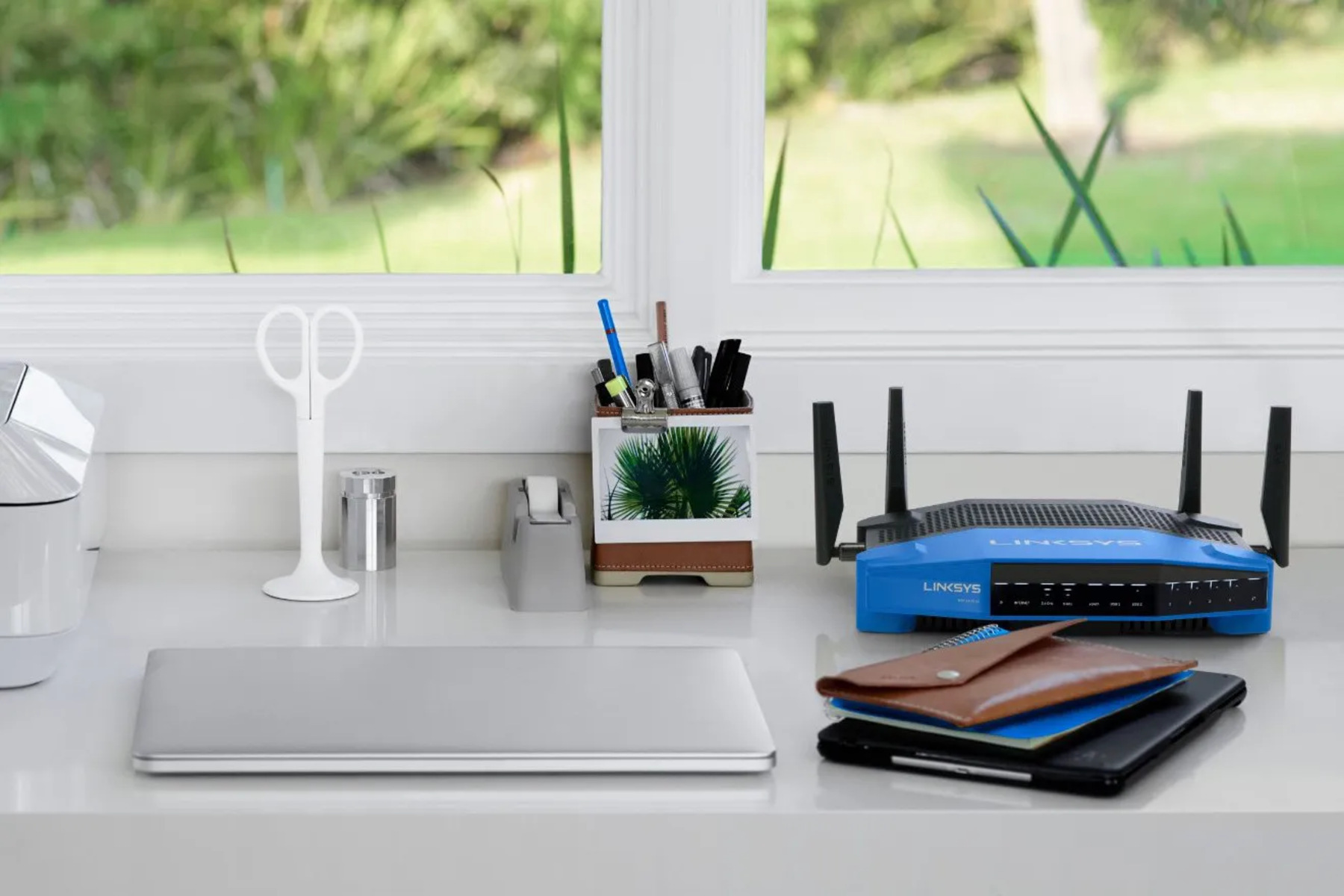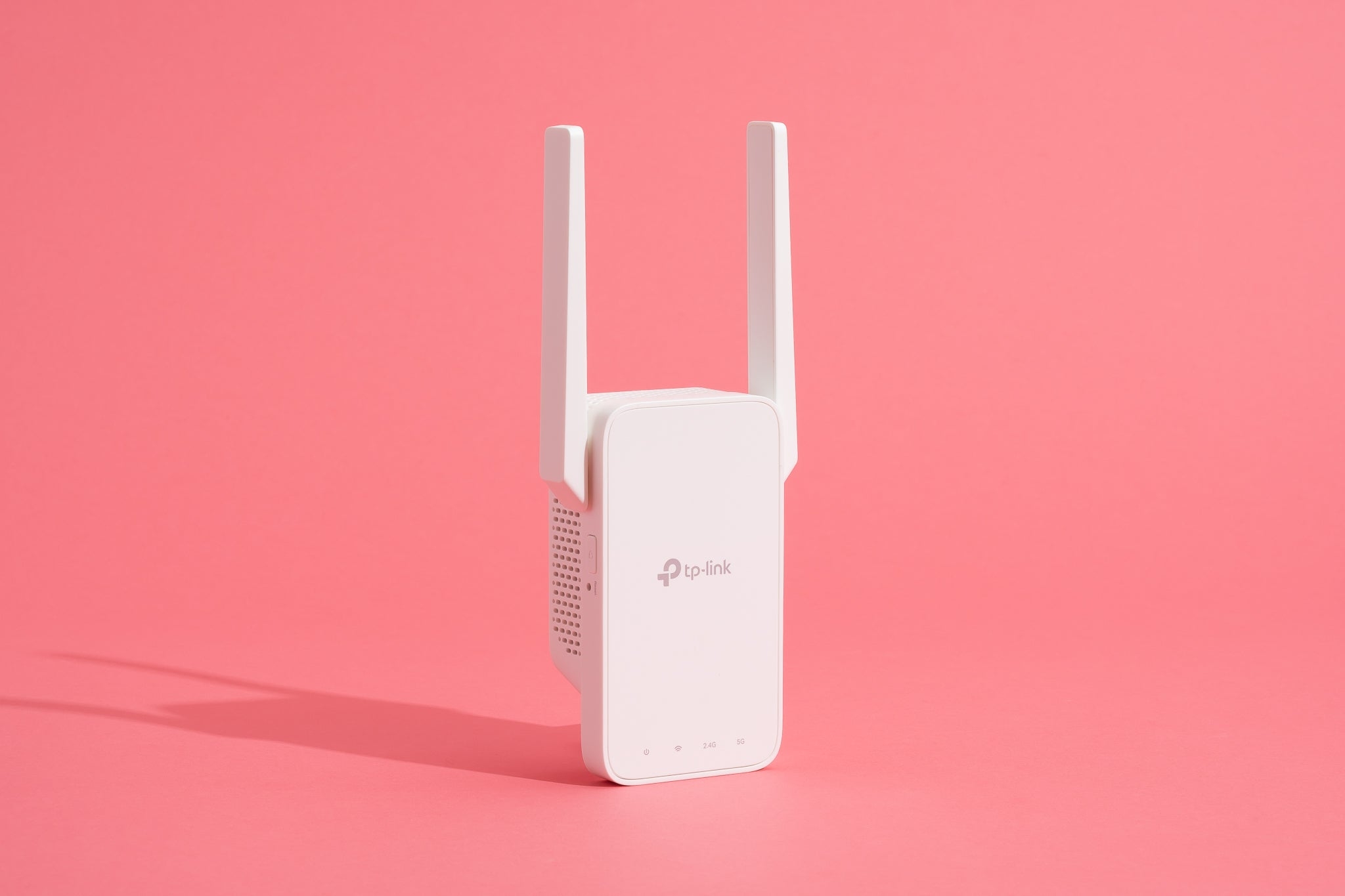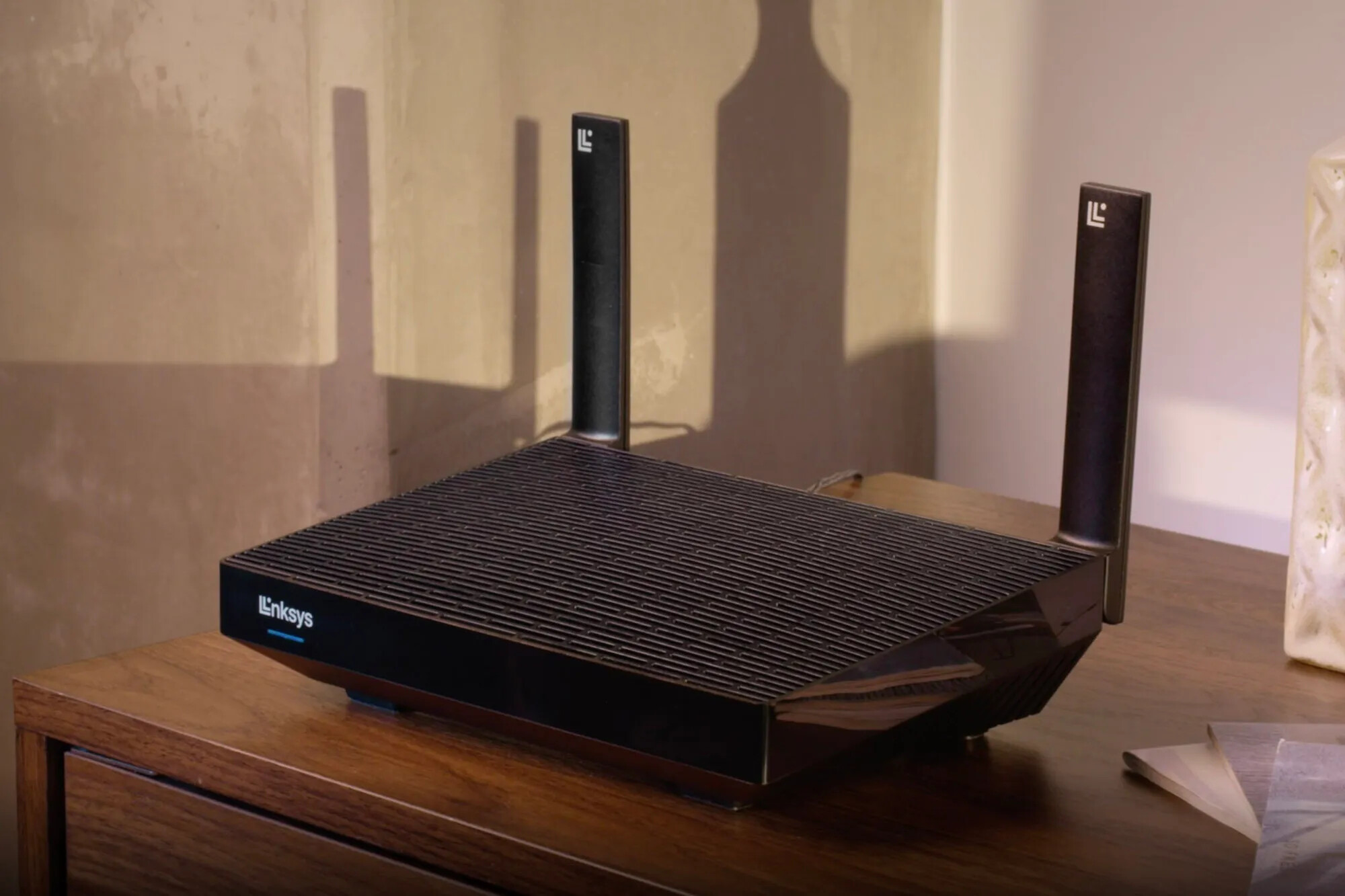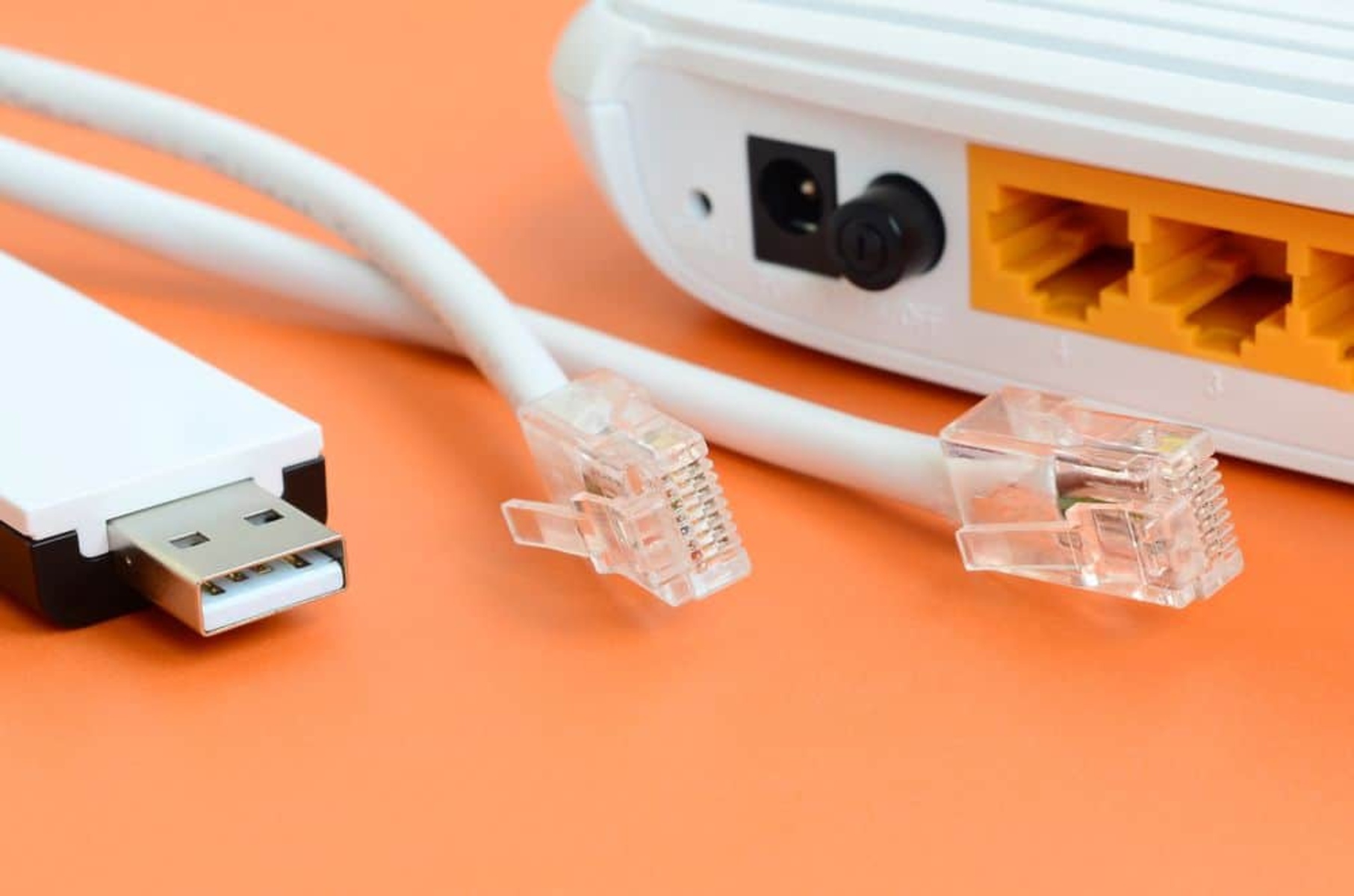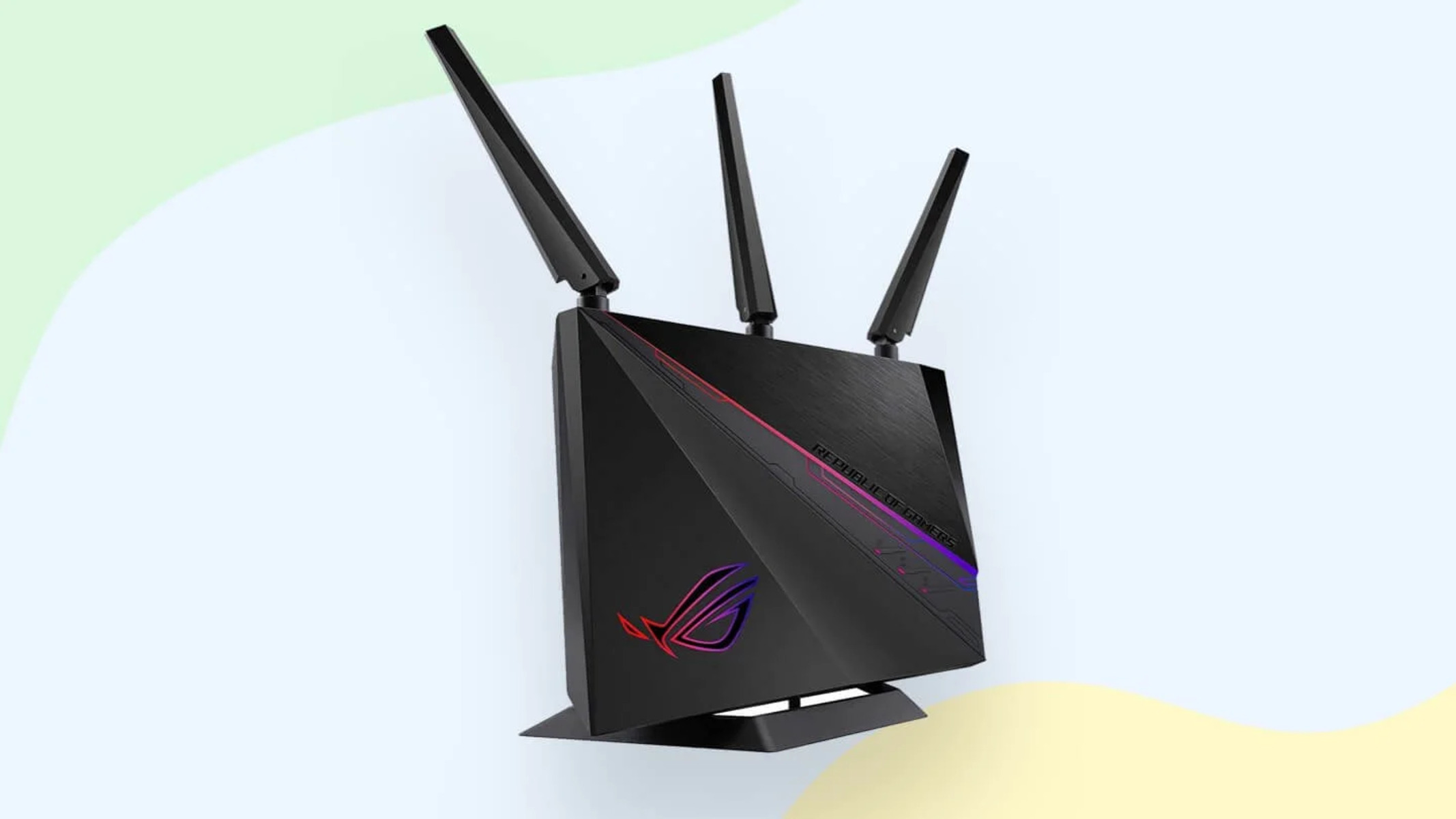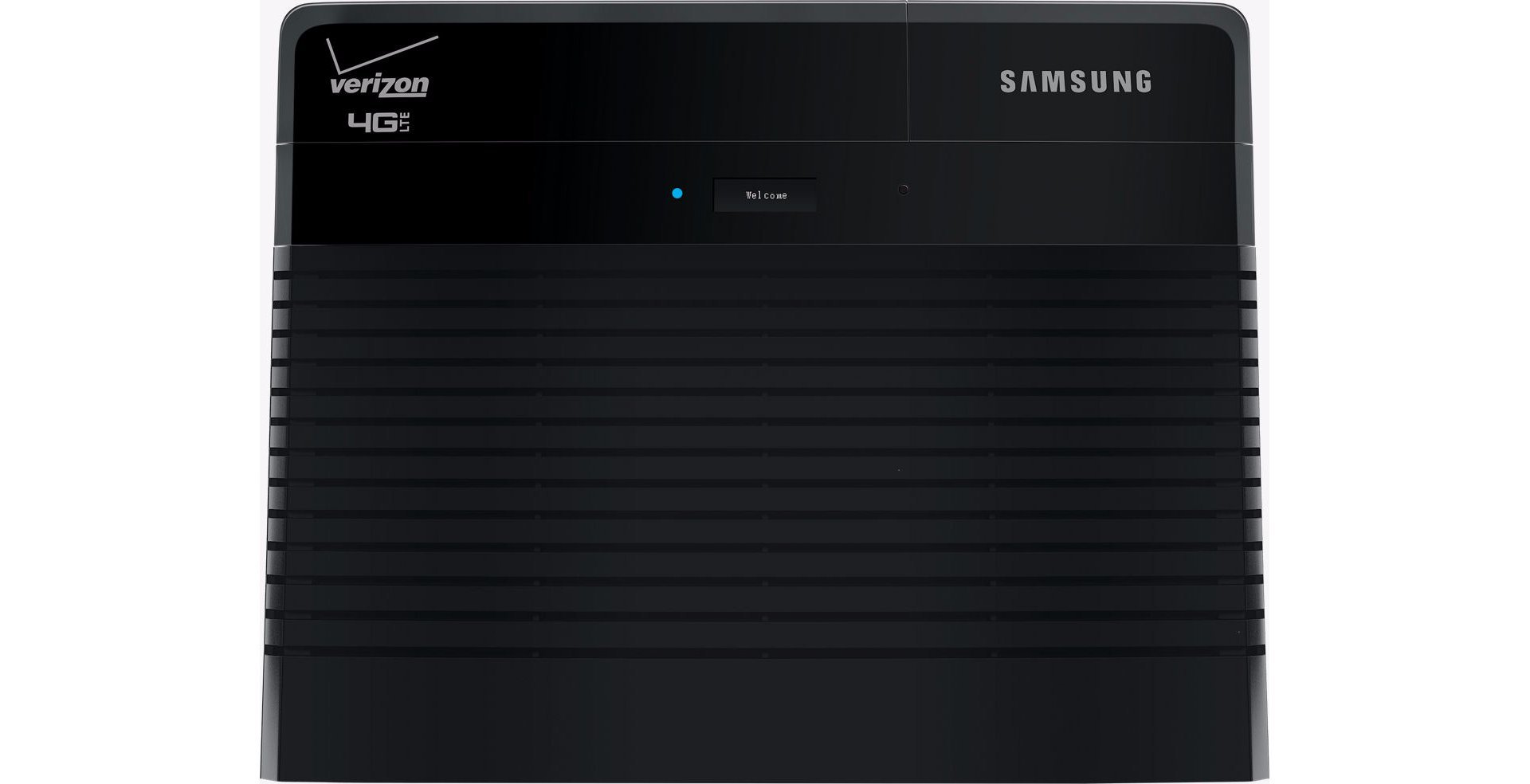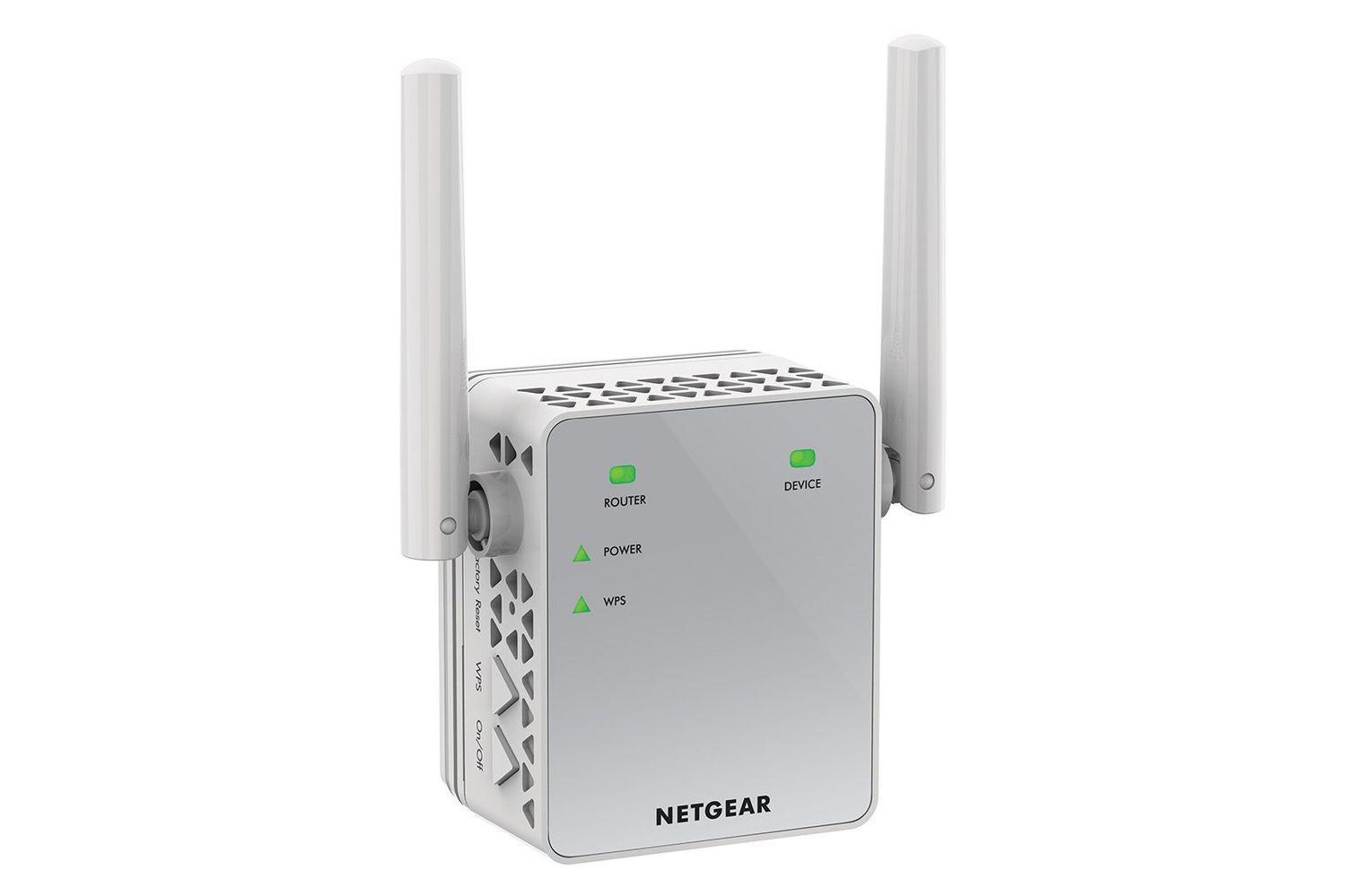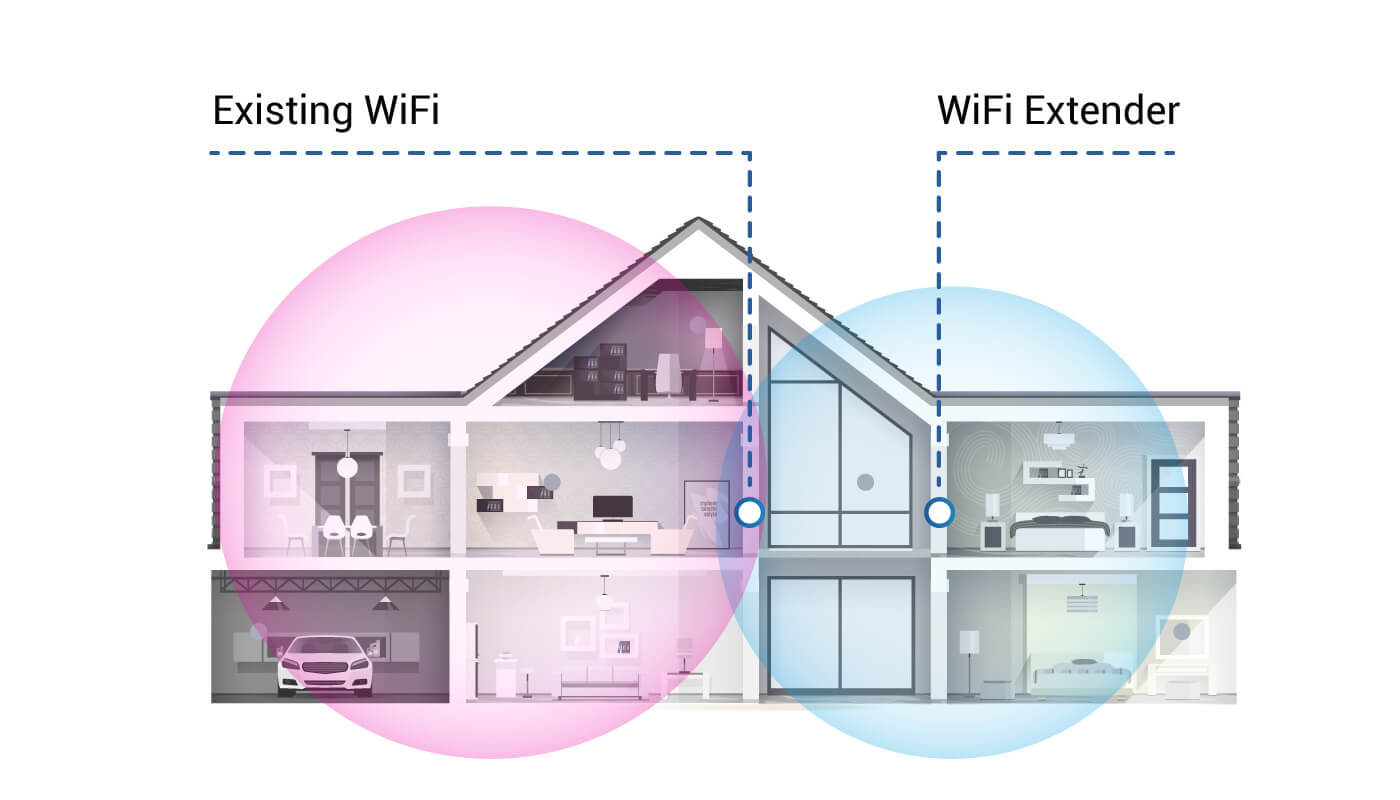Introduction
Having a reliable and powerful wireless internet connection is crucial in today’s world, where we rely heavily on the internet for work, communication, entertainment, and more. Whether you’re at home, in the office, or at a coffee shop, having a strong and stable Wi-Fi signal is essential for seamless online experiences.
However, even with the most advanced wireless routers, you may find that the Wi-Fi signal doesn’t quite reach every corner of your space. This could lead to frustratingly slow internet speeds, dropped connections, and limited coverage in certain areas.
In this article, we will explore various strategies and techniques that can help you extend the range of your wireless router, allowing you to enjoy uninterrupted connectivity throughout your home or office. By implementing these methods, you can eliminate Wi-Fi dead zones and ensure consistent and reliable internet access across all your devices.
Whether you’re struggling with a weak Wi-Fi signal in a specific room or your entire property, we’ve got you covered. From assessing the coverage area to upgrading antennas, using Wi-Fi extenders, considering powerline networking, and exploring mesh Wi-Fi systems, we will provide you with a comprehensive guide to improving your wireless network’s coverage.
Before we dive into the various solutions, it’s important to note that the effectiveness of each method may vary depending on factors like your router model, the layout of your space, and interference from other devices. It may require some trial and error to find the best solution for your specific situation.
So, without further ado, let’s delve into the different techniques you can employ to extend the range of your wireless router and enhance your internet experience.
Assessing the Coverage Area
Before implementing any range-extending solutions, it’s crucial to assess the coverage area of your wireless network. This will help you identify the weak spots and determine the best course of action to improve the signal strength.
Start by surveying your space and identifying areas where the Wi-Fi signal is weak or non-existent. Move around with your device and take note of any dead zones or areas with poor signal quality. Keep in mind that certain factors can interfere with the Wi-Fi signal, such as walls, furniture, appliances, and other electronic devices.
In addition to physical obstructions, interference from neighboring Wi-Fi networks can also impact your signal strength. You can use Wi-Fi analyzer tools to identify the channels with the least interference and adjust your router’s settings accordingly.
Furthermore, if you have a large property or multiple floors, you may encounter coverage issues due to the limited range of your router. By mapping out the specific areas where the signal is weak, you can determine the best placement for range extenders or additional access points.
Another aspect to consider is the type of wireless standard your router supports. Older routers that use 802.11b or 802.11g may have limited range compared to newer routers that support 802.11n or 802.11ac. If your router is outdated, upgrading to a newer model could significantly improve the coverage area and signal strength.
By thoroughly assessing the coverage area of your wireless network, you’ll gain a clearer understanding of the extent of the problem and be better equipped to choose the most effective solution for extending the range of your router.
Choosing the Right Router
When it comes to extending the range of your wireless router, one of the most important factors to consider is the quality of the router itself. Investing in a high-quality router can significantly improve your network’s coverage area and overall performance.
There are a few key features to look for when selecting a router for long-range coverage. Firstly, consider the wireless standards supported by the router. The newer and faster the standard (such as 802.11n or 802.11ac), the better the range and speed you can expect.
Another factor to consider is the number of antennas the router has. Routers with multiple high-gain antennas tend to offer better coverage and signal strength compared to models with fewer antennas. These antennas help to transmit and receive signals over a wider area, reducing the likelihood of dead zones.
Additionally, routers with removable antennas provide the flexibility to upgrade them with more powerful ones in the future. This allows for further customization and optimization of your network’s range.
Furthermore, routers equipped with beamforming technology can improve the range and signal strength by focusing the Wi-Fi signal towards connected devices. This can be particularly beneficial in larger properties or spaces with multiple obstacles.
Consider the size of your space and the number of devices that will be connected to the router. If you have a large home or office with many devices, opting for a router with higher processing power and more RAM can ensure smooth and efficient performance.
Lastly, it’s important to check the reviews and ratings of different router models before making a purchase. Look for routers that have consistently positive feedback regarding their range and coverage capabilities.
By carefully selecting the right router with the appropriate features, you can lay a solid foundation for extending the range of your wireless network.
Placement Considerations
The placement of your wireless router plays a crucial role in determining the range and quality of your Wi-Fi signal. A well-placed router can help maximize coverage and minimize interference, leading to better overall performance. Here are some important considerations for router placement:
1. Central Location: Position your router in a central location within your home or office. This helps distribute the Wi-Fi signal more evenly and reduces the distance between the router and devices in different areas. Avoid placing the router near walls, large appliances, or other objects that can obstruct the signal.
2. Elevated Position: If possible, position the router at a higher elevation. Placing it on a shelf or mounting it on the wall can improve coverage, as the signal can propagate more easily without being blocked by furniture or other obstructions.
3. Avoid Interference: Keep your router away from electronic devices that can interfere with the Wi-Fi signal. This includes cordless phones, microwave ovens, baby monitors, and Bluetooth devices. These devices operate on similar frequencies and can cause signal degradation or interference.
4. Adjust Antenna Position: If your router has adjustable antennas, experiment with different angles and positions to find the optimal configuration. Sometimes, tilting or orienting the antennas towards the areas you want to cover can help enhance the signal strength in those specific directions.
5. Use Wi-Fi Signal Extenders: In areas where the Wi-Fi signal remains weak even after optimizing router placement, consider using Wi-Fi signal extenders or repeaters. These devices receive the existing Wi-Fi signal and amplify it, extending the coverage to hard-to-reach areas.
6. Multiple Access Points: For larger spaces, consider setting up multiple access points or routers connected through Ethernet cables. This approach, commonly known as a mesh network or multi-router setup, helps distribute the Wi-Fi signal more evenly across the entire property.
By carefully considering the placement of your wireless router, you can eliminate dead zones, reduce interference, and enhance Wi-Fi coverage throughout your space.
Upgrading Antennas
One effective way to extend the range of your wireless router is by upgrading its antennas. While most routers come with built-in antennas, these may not always provide the best coverage and signal strength. By replacing them with higher quality or more powerful antennas, you can enhance the performance of your router. Here’s what you need to know about upgrading antennas:
1. Determine Compatibility: Before purchasing new antennas, ensure they are compatible with your router model. Check the specifications and look for antennas that support the same frequency and wireless standards as your router.
2. Gain and Directionality: When choosing new antennas, consider their gain and directionality. Antennas with higher gain can transmit and receive signals over longer distances, extending the range of your router. Directional antennas focus the signal in specific directions, which can be useful for targeting signal coverage in specific areas.
3. Omni-directional Antennas: Omni-directional antennas transmit signals in all directions, providing a wider coverage area. They are suitable for general use in homes or small offices, where the signal needs to reach multiple areas without focusing on any specific direction.
4. High-gain Antennas: High-gain antennas are designed to increase the strength and range of your Wi-Fi signal. They are particularly useful in situations where you need to amplify the signal to cover larger areas or overcome obstacles like walls and floors.
5. Replaceable Antennas: Some routers have removable antennas, which gives you the option to upgrade them. If your router has this feature, consider purchasing aftermarket antennas that are specifically designed for improved range and performance.
6. Antenna Placement: Once you have upgraded your router’s antennas, it’s important to position them correctly. Experiment with different orientations and angles to find the optimal placement for maximum signal strength and coverage.
Upgrading your router’s antennas can be a cost-effective way to extend the range of your wireless network. By choosing antennas with higher gain and directionality, you can significantly improve the overall coverage and performance of your Wi-Fi signal.
Using Wi-Fi Extenders
Wi-Fi extenders, also known as repeaters or boosters, are devices that can help extend the range of your wireless router. They work by receiving the Wi-Fi signal from your router and amplifying it to reach areas with weak or no coverage. The setup process is relatively simple, making Wi-Fi extenders a popular choice for improving Wi-Fi coverage. Here’s how they work and how to use them effectively:
1. Placement: Wi-Fi extenders should be placed within the range of your existing Wi-Fi network, ideally halfway between your router and the area with weak coverage. This allows the extender to receive a strong signal from the router and extend it further. Avoid placing the extender too far away from the router, as it may not be able to receive a strong enough signal to amplify.
2. Setup Process: Most Wi-Fi extenders come with a setup wizard that guides you through the installation process. Typically, you connect the extender to a power source and follow the instructions to connect it to your existing Wi-Fi network. Once connected, the extender will create a new Wi-Fi network with the same SSID and password as your router, allowing devices to seamlessly switch between the router and extender as needed.
3. Proper Configuration: Some Wi-Fi extenders allow for configuration options such as adjusting the transmit power, changing channels, or limiting the extender to specific devices. These settings can be accessed through a web interface or companion app. Experimenting with different configurations can help optimize the performance of the extender and improve the overall Wi-Fi coverage in your space.
4. Limitations: While Wi-Fi extenders can effectively extend the range of your Wi-Fi network, they can also introduce some limitations. They can potentially decrease the overall network speed, as the extender must rebroadcast the signal. Additionally, extenders may require separate Wi-Fi connections and may not support seamless roaming between the router and extender. Keep these limitations in mind when considering Wi-Fi extenders as a solution.
Wi-Fi extenders can be a convenient solution for extending the range of your wireless network, especially in areas where signal strength is weak due to distance or physical obstructions. By placing them strategically and properly configuring them, you can effectively boost your Wi-Fi coverage and provide a reliable internet connection across your entire space.
Powerline Networking
Powerline networking is a technology that allows you to extend your Wi-Fi network using your existing electrical wiring. It is a convenient and effective solution for areas where Wi-Fi signals are weakened by walls, interference, or long distances. Powerline networking involves the use of powerline adapters, which come in pairs and work by converting your electrical system into a network connection. Here’s how powerline networking works and how to set it up:
1. Powerline Adapters: A powerline adapter consists of two units – one that connects to your router via an Ethernet cable and plugs into a power outlet near the router, and another unit that plugs into a power outlet near the desired Wi-Fi dead spot. The two adapters communicate with each other through the electrical wiring in your home or office to create a network connection.
2. Setup Process: Setting up powerline networking is relatively straightforward. Begin by connecting one of the powerline adapters to your router using an Ethernet cable. Then, plug it into a nearby power outlet. The adapter will establish a network connection with your router. Next, take the second powerline adapter and plug it into a power outlet in the area where you need to extend the Wi-Fi coverage. This adapter will wirelessly broadcast a Wi-Fi signal, allowing you to connect your devices and enjoy an extended network.
3. Considerations: It’s important to note that powerline networking performance can vary depending on the quality and age of your electrical wiring. Older or poorly maintained wiring may experience signal degradation, resulting in slower speeds. Additionally, powerline adapters work best when plugged directly into a wall outlet rather than power strips or surge protectors, as these devices can interfere with the signal.
4. Security: Powerline networking offers encryption options to secure your data transmission. Make sure to configure the security settings to protect your network from unauthorized access.
Powerline networking is an effective solution for extending Wi-Fi coverage in areas where traditional wireless signals struggle to reach. By leveraging your existing electrical wiring, you can create a reliable network connection and enjoy seamless connectivity in every corner of your space.
Mesh Wi-Fi Systems
Mesh Wi-Fi systems are a revolutionary solution for extending the range of your wireless network while providing seamless connectivity throughout your home or office. Unlike traditional routers, which rely on a single device to provide Wi-Fi coverage, mesh Wi-Fi systems consist of multiple interconnected access points, creating a mesh network. Here’s how mesh Wi-Fi systems work and why they are an excellent choice for extending your network’s range:
1. Nodes and Hub: In a mesh Wi-Fi system, you have a primary device known as the hub, which connects to your modem and acts as the central control point for the network. You also have additional nodes, which are strategically placed throughout your space to create a mesh network. These nodes communicate with each other wirelessly, ensuring a strong and consistent Wi-Fi signal across your entire coverage area.
2. Seamless Roaming: One of the main advantages of mesh Wi-Fi systems is seamless roaming. With traditional routers, your devices need to disconnect and reconnect to different networks as you move around your space. With a mesh system, the network’s name (SSID) remains the same throughout your home or office, allowing your devices to automatically switch between access points without any interruption or manual connection switch.
3. Self-Healing Network: In a mesh network, if one node fails or experiences issues, the system automatically adjusts and redistributes the Wi-Fi signal through other nodes. This self-healing feature ensures that your network remains stable and reliable, even if there are temporary obstacles or hardware failures.
4. Easy Setup and Management: Mesh systems are designed to be user-friendly, with simple setup processes and intuitive management interfaces. Most systems offer smartphone apps that allow you to monitor and control your network easily. You can manage settings, set up guest networks, and even prioritize specific devices or applications for optimal performance.
5. Scalability: Mesh Wi-Fi systems are highly scalable. If you find that your coverage needs change or you want to expand your network even further, you can simply add more nodes to the existing network. This flexibility allows you to customize your network based on the size and layout of your space.
Mesh Wi-Fi systems are a comprehensive solution for extending Wi-Fi coverage throughout your entire home or office. With their seamless roaming capabilities, self-healing network, and easy management, they provide a reliable, high-performance Wi-Fi experience that can eliminate dead zones and ensure consistent connectivity across all of your devices.
DIY Solutions
In addition to commercial products, there are also several do-it-yourself solutions that you can explore to extend the range of your wireless network. These DIY methods can be cost-effective alternatives, especially for tech-savvy individuals who are comfortable with tinkering and troubleshooting. Here are some DIY solutions to consider:
1. External Antenna Boosters: If your router has external antenna connectors, you can purchase high-gain antennas or directional antennas to replace the stock ones. These antennas can help improve signal strength and range, allowing for better coverage in specific directions or areas of your space.
2. Repositioning Router: Sometimes, simply repositioning your router can make a significant difference in signal range and coverage. Experiment with different locations and orientations to find the optimum placement for your router. Consider elevating it or using a Wi-Fi signal analyzer app to identify any interference or dead spots within your space.
3. Building Reflectors or Repeaters: DIY reflectors or repeaters can help redirect and boost the Wi-Fi signal in specific areas. Reflectors can be made using common household items like aluminum foil or reflective surfaces, placed behind the router to reflect and focus the signals. Repeaters can be created using an old router configured as an access point to extend the range of your primary router.
4. Wireless Bridge: If you have a secondary router or access point lying around, you can repurpose it as a wireless bridge to extend your network’s range. By configuring it appropriately, the secondary device can receive the Wi-Fi signal from the primary router and then rebroadcast it, effectively expanding the coverage area.
5. High-gain USB Adapters: Another option is to use high-gain USB Wi-Fi adapters for devices that have weak internal antennas or lack Wi-Fi capabilities. These adapters can provide a stronger and more reliable connection, allowing devices to access the Wi-Fi network from farther distances.
While these DIY solutions can be effective, they may require some technical know-how and experimentation. It’s important to research and follow proper instructions to avoid any damage or suboptimal performance. However, if you enjoy hands-on projects and have a knack for troubleshooting, these DIY methods can provide satisfying results in extending your wireless network’s coverage.
Conclusion
Extending the range of your wireless router is essential for ensuring reliable and seamless Wi-Fi connectivity throughout your home or office. By implementing the strategies and techniques discussed in this article, you can eliminate frustrating dead zones, improve signal strength, and enhance your overall internet experience.
Start by assessing the coverage area of your network to identify weak spots and potential sources of interference. This will help you determine the most effective solutions to extend your network’s range. Consider upgrading your router to a model that supports the latest wireless standards and features, such as multiple high-gain antennas and beamforming technology.
Proper router placement can make a significant difference in signal coverage and strength. Position your router in a central location, elevate it if possible, and optimize the angles and orientations of the antennas for maximum coverage. If needed, utilize Wi-Fi extenders, powerline networking, or mesh Wi-Fi systems to extend coverage to hard-to-reach areas or larger properties.
If you’re feeling adventurous, DIY solutions like upgrading antennas, building reflectors or repeaters, or repurposing old routers as wireless bridges can offer cost-effective alternatives. These DIY methods require technical knowledge and experimentation but can deliver satisfying results for tech-savvy individuals.
Remember, each solution may have its limitations and may work differently based on your specific space and requirements. It’s important to assess your needs, research the available options, and experiment to find the best combination of solutions for your unique situation.
With the right combination of strategies and techniques, you can overcome Wi-Fi coverage challenges and enjoy seamless connectivity throughout your entire space. Say goodbye to frustrating dead zones and welcome a reliable and robust wireless network that meets all your internet needs.







